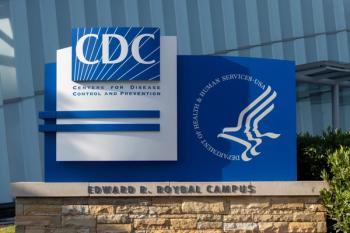
Educating Patients with Chronic Kidney Disease Can Reduce Mortality Risk
Active patient care with chronic kidney disease may provide enormous benefits for patients, the economy, and society.
Research suggests that the budget for end-stage kidney disease costs Medicare more money than the combined budgets of Homeland Security, the National Institutes of Health (NIH), and NASA, at $153 billion, according to Jane Davis, APN, APRN, DNP, NP, a nurse practitioner at The University of Alabama, Birmingham, and speaker at the American Society for Nephrology Kidney Week conference in Orlando, Florida.
One way to mitigate these costs can be through patient education, which she suggests is a small investment with high return in her “Kidney Disease Education” talk. For patients with chronic kidney disease (CKD), this could have incredible benefits, considering surveys found that 35% do not even understand what a CKD diagnosis is.
“This is pretty amazing to me. Why are patients coming to a kidney professional if they don’t even understand the disease?” Davis said in her presentation.
Statistics show that 75% of patients do not know which medications will help the disease, and the same percent do not know which medications to avoid.
Davis is in favor of whatever decision the patient chooses when it comes to their health decisions, but she finds that educating patients about CKD from day 1 can help them to choose more effective lifestyle and treatment options.
Davis said that education should be a part of every patient encounter. She cautions against patients turning to “the most undeniable source…the neighbor whose brother’s uncle’s cousin’s sister [knows a] person down the hall that she worked with, [who] had kidney disease,” Davis said.
It was found in one study that patients who were pre-dialysis and willingly participated in a CKD education program had reduced hospitalizations and mortality.
Kidney Disease Education (KDE), which was founded in 2010, offers certain patients 6 hours of lifetime education to learn about kidney basics, identify and manage comorbidities, and prevent complications. There are also many sources online that patients can continue to turn to. Notable options include those given by:
- National Kidney Foundation PowerPoint presentations
- YouTube
- Wikipedia
One issue that patients run into is they are not ready to learn about their disease.
“Health literacy and education don’t correlate,” she said.
Patients could be too embarrassed to ask questions, do not understand the information, and practitioners may not know how to educate patients. In 2016, only 2% of patients received KDE, which accentuates the barrier in accessibility.
A way to overcome miscommunication is to explain the disease with numbers that patients can understand. Davis herself uses people in the place of numbers, giving an example in which she subs certain metrics with “factory workers.” She also stresses teaching patients as if talking to a fifth grader. At day 1, Davis holds up a kidney and simply tells the patient “This is a kidney,” before offering a more detailed explanation.
More than 2.4 times more CKD patients are hospitalized than non-CKD patients, but there are ways to slow the decline. Education and learning how to self-manage one’s own treatment can prevent dialysis, according to Davis.
“I think if you take nothing else away from my talk about education, just take away that it works,” Davis said.
Reference
Davis, Jane. Kidney Disease Education. ASN Kidney Week. November 5, 2022. https://www.asn-online.org/education/kidneyweek/2022/program-session-details.aspx?sessId=421223
Newsletter
Stay informed on drug updates, treatment guidelines, and pharmacy practice trends—subscribe to Pharmacy Times for weekly clinical insights.






















































































































































































































